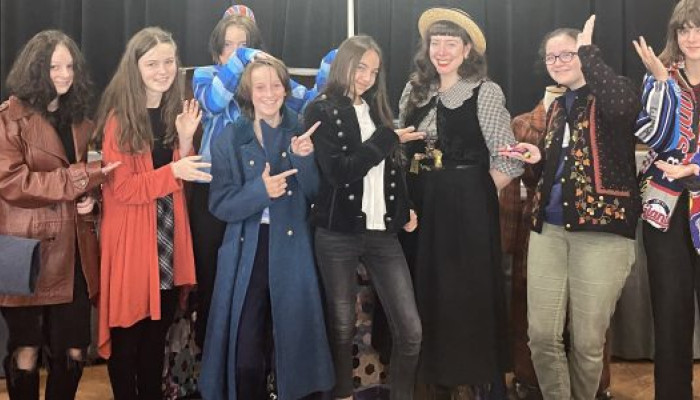What made you decide to take the sustainable fashion message into school?
The project evolved from two of our charity’s objectives;
to raise the profile of our shops in the local area
by highlighting the link between shopping & donating and sustainable fashion
to connect with schools and colleges in our local area for fundraising and volunteering
by offering a product which fitted into the curriculum and schools’ green/ eco credentials
Being a local charity, schools and colleges are hugely important to us. Not only are they a way of reaching large numbers of people in one area to talk about the charity and the work we support, and a source of youth volunteers, many of the students and staff will themselves have had personal experience of the work of the hospice through friends or family.
The impact of Covid-19 on education meant that schools and colleges had been unable to hold many of their usual fundraising events and we had not been able to go into schools ourselves to speak to students directly.
When we heard about Sustainable Fashion Week being sponsored by the Charity Retail Association we brought our Retail Managers together to brainstorm some ideas of how we could make the most of the opportunity. Amongst other ideas which we developed such as in-store POS and social media activity, the idea of using the opportunity to educate and inform about sustainable fashion to a younger audience was born.
How did you decide which school, area, age range etc as your first venue?
We started by contacting schools around each of our shops, both primary and secondary, to gauge interest in the project, offering to come into the schools to deliver assemblies during Sustainable Fashion Week. From that initial contact, we started conversations with five local schools, and are now in contact with several others.
Who did you need to contact to put the idea forward and gain access to the school?
We had some established contacts within schools we had worked with previously, but most we approached using the main school office email addresses. This is how we established contact with Great Marlow School, prior to our new Marlow shop opening in August, who have been great supporters of the project and who we continue to work with.
How much time did it take to organise, and how much ‘people’ resource did the organising need?
There were several elements to the project and it was a great team effort. The Marketing team led the overall project and took on responsibility for contacting schools and managing the responses and organisation of talks. They worked closely with several of the Retail Managers who had good levels of knowledge around sustainable fashion and a background in education to develop the presentation materials and classroom guides for teachers. Talks were delivered either by Retail Managers or the Marketing team, and we are now looking to recruit ‘Sustainable Fashion Ambassador’ volunteers to continue delivering the talks to a wider audience.
How long was your session, what subject areas did you cover and what did you take with you?
Session lengths were dictated by time available in each school, but were between 35 minutes and 50 minutes. We have developed two presentation packs for KS2 and KS3 which can be adapted depending on requests from the school to focus on specific areas or the time allowed.
The main message is around understanding the impact of the current fashion industry and why this is unsustainable, leading to the main things that consumers can do to become sustainable shoppers e.g., wearing clothes for longer, looking after their clothes so that they can be worn longer or sold or donated on, and of course buying pre-loved. Longer sessions may also include more information about different types of materials, up-styling or restyling outfits.
We have also developed more interactive sessions or workshops where students can try vintage outfits on or sort donations by materials, or country of origin etc.
We take a selection of donated items to illustrate various messages through the presentations.
How many people were needed to deliver the session?
Only one person is required to deliver the session itself.
How did it go down? Did you get many questions?
We have had some great interaction, both from students and teachers. The fact which seems to stick most is the amount of water used to make a pair of jeans – especially when extrapolated for how much that is for every person in the room or school!
Do the school aim to take this further – into the classroom perhaps?
We shall be returning to Great Marlow School in September to deliver the same presentation to the new Year 7s. And Aylesbury High School have used the presentation as part of an inter-school Arts competition which will result in a Fashion Show in March which will fundraise for us.
We are about to go into Aylesbury College to deliver another talk, to inspire fashion students who are working on a Sustainable Fashion Show which again will fundraise for us. Students will also volunteer in our shops for a number of weeks as part of their course.
Was there any spend involved on your part?
There has been no additional spend – costs were staff time and travel for the project.
Do you plan to visit more schools?
Yes, this is an ongoing project which we shall continue to offer schools through the year, especially in new areas as we open more shops. We are also looking to grow the project to cover local youth groups such as Scouts and Guides.
Do you encourage other charity retailers to do the same?
Definitely!
Any top tips?
This is a great opportunity for cross-charity working so make the most of the opportunity to talk and work with colleagues to deliver a great product, as well as developing the relationship between your charity and the schools.
